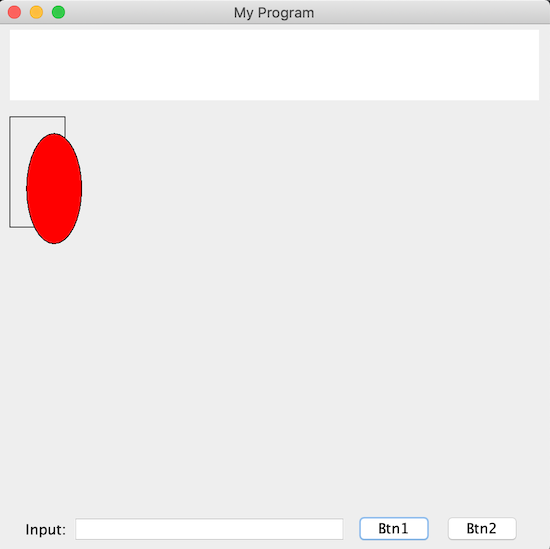

 |  |
The Breadboards library provides a simple way to write java programs with graphical outputs. Breadboard graphics programs can be thought of as functioning much like a felt board, where various shapes can be "stuck to the board". The Breadboard library come with several basic shapes, each of which is represented by a class (whose name is shown in parentheses below):

import java.awt.Color; // this is needed to use the constant "Color.RED" below
import breadboards.Breadboard;
import breadboards.GOval;
import breadboards.GRect;
public class GraphicsDemo extends Breadboard {
public void onButton1Click() {
//construct a rectangle whose upper left corner is at (10,10)
//and with width 50 and height 100; reference it with a variable
//named myRect and add it to the graphics window
GRect myRect = new GRect(10,10,50,100);
this.add(myRect);
//construct an oval whose upper left corner is at (25,25)
//and with width 50 and height 100; reference it with a variable
//named myOval; set things so that when drawn on the screen
//its interior will be filled in and the entire oval will be red in color;
//and then add it to the graphics window.
GOval myOval = new GOval(25,25,50,100);
myOval.setFilled(true);
myOval.setFillColor(Color.RED);
this.add(myOval);
}
public static void main(String[] args) {
new GraphicsDemo();
}
}